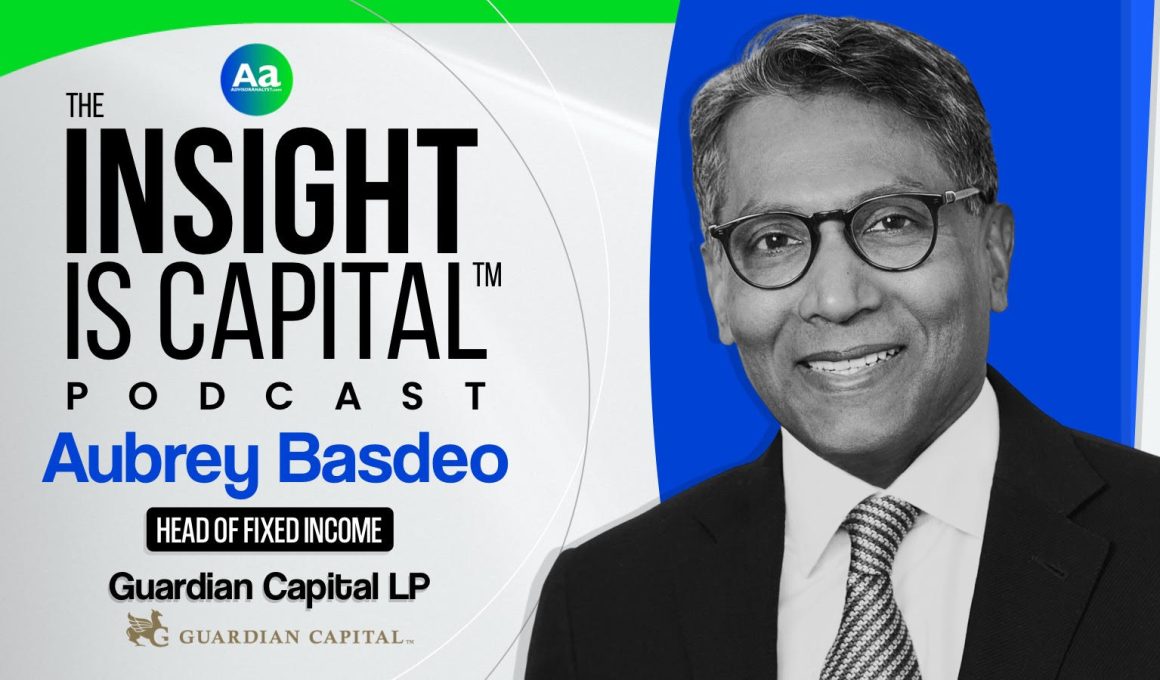Listen on The Move
In this episode, our conversation with Aubrey Basdeo, Head of Fixed Income at Guardian Capital LP, we focus on the fixed income landscape and the outlook for interest rates in the US and Canada, the Federal Reserve's approach to inflation and interest rate cuts, as well as the differences between the US and Canadian economies, the impact of mortgage rates on consumer spending and the potential for rate cuts by the Bank of Canada. Overall, the conversation highlights the importance of maximizing optionality and the challenges of monetary policy in a changing economic environment, various topics related to central banks, portfolio construction, and fixed income investing. Our main themes include the shift in central bank narratives, the impact of inflation on monetary policy, the changing dynamics of portfolio construction, the shifting climate in holding duration for the sake of hedging portfolios, and the critical importance of using active management in fixed income. Our conversation also touches lightheartedly on the challenges faced by different generations in the current economic environment.
Timestamped Highlights:
00:00 Maximizing Optionality: The Federal Reserve's Approach to Interest Rate Cuts
12:10 US Exceptionalism: Strong Growth and Pro-Growth Policies
15:55 Challenges in the Canadian Economy: Higher Mortgage Rates and Slower Job Growth
17:54 American homeowners have tax deduction advantage.
21:16 Bank of Canada needs to pivot on inflation.
24:32 Bond market optimism can spell consumer pessimism.
26:43 Bank of Canada rate likely to rise.
32:32 Portfolio construction shifting due to global changes.
35:26 Hedging portfolio with fixed income shifted focus.
40:24 Fed should be less restrictive, economy speed-dependent.
43:20 Bank of Canada will ease rates moderately.
48:29 Central banks shift risk approach, requiring active management.
50:45 Focus on coupon, not duration, for returns.
54:12 Economic growth needs younger population to sustain.
"The mistake is that if they're going to make a mistake, it's that they're going to be focused on that two number (~2% neutral rate) and insist that they need to get to that, rather than you're on that trajectory towards two and you can start to ease at that point."
"The world that we're entering into in terms of how things are going to, the factors that we're gonna be reacting to are going to be different from those factors that guided portfolio construction for the past 30 years."
"If you're looking for duration as the hedge to the portfolio, that's not going to provide it in the same way that it did 10 years ago."
Takeaways
- The Federal Reserve is aiming to maximize optionality in its approach to interest rate cuts, with the possibility of three cuts, two cuts, or no cuts depending on the evolution of inflation and the economy.
- The US economy is showing signs of exceptionalism, with strong growth and pro-growth policies driving the outlook for interest rates. In contrast, Europe and China are facing slower growth and export-driven challenges.
- The Bank of Canada is expected to ease interest rates ahead of the Federal Reserve, as the Canadian economy faces challenges from higher mortgage rates and slower job growth.
- The impact of mortgage rates on consumer spending differs between the US and Canada, with American homeowners benefiting from tax deductions and longer-term mortgages.
- Bond investors are optimistic about the potential for rate cuts, while consumers may be more pessimistic due to the potential impact on disposable income.
- The Bank of Canada will need to carefully navigate the path of easing, considering the impact on inflation, the interest rate differential with the US, and the potential depreciation of the Canadian dollar. Central banks may shift their narrative from targeting a specific inflation number to being less restrictive in their policies.
- Portfolio construction needs to adapt to a changing economic environment and regime shift.
- Duration may no longer provide the same level of protection in portfolios as it did in the past.
- Investors should focus on the belly of the yield curve for fixed income exposure.
- Active management is crucial in navigating the risks and opportunities in the fixed income market.
- The current economic environment has different implications for different generations.
Copyright © AdvisorAnalyst.com
















